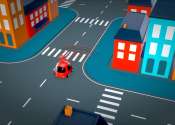Technique uses magnets, light to control and reconfigure soft robots
Researchers from North Carolina State University and Elon University have developed a technique that allows them to remotely control the movement of soft robots, lock them into position for as long as needed and later reconfigure ...
Aug 2, 2019
0
105









